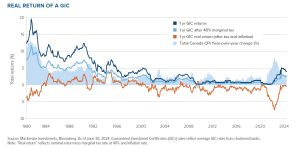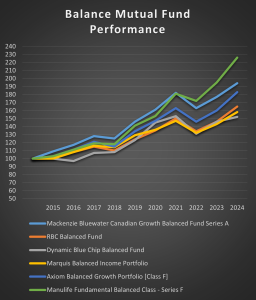Executive Summary
Dealing with dementia with financial services and investment clients will become increasingly complicated over time. The number of people who are aging, the ever-extending length of their lives, and the activity that they display well into retirement, coupled with the complexity of capital markets and products can produce a difficult situation for many.
The boundaries of the Boomer generation has them aged from 55 to 75 in 2024. Advances in all types of medical diagnostic and treatment regimens has increased the life expectancy well into the 80s for both men and women in Canada and the United States.
The legislation and regulation regarding clients with dementia will continue to evolve, but it squarely falls under the Know Your Client area. As you suggest or receive investment recommendations and choices to or from your clients, you must feel confident that they are capable of making decisions on their behalf.
And as much as Advisors may feel that Compliance can make their lives miserable at times, this is one situation where involving Compliance will be the smartest decision to make. It is paramount that you maintain your clients’ interests above all else and if you embark on this journey too quickly, without guidance, and, frankly, as the friend and trusted advisor who is now discussing potentially personal and emotional issues, the relationship could be irreparably damaged.
Involve a third-party like Compliance, branch or regional management to assist with each case.
If one of your clients displays the following characteristics, it may be time to act.
- Rapidly forgetting items and details, and the inability to retain new information
- Difficulty performing familiar tasks
- Forgetting words or using words out of context
- Disorientation in time and space by not knowing the day or a familiar place
- Impaired judgment with the inability to analyze and act on a situation
- Problems with abstract thinking like telling time or performing mathematics
- Misplacing items or putting them in unlikely places
- Severe mood swings from easy-going to anger
- Changes in personality
- Loss of initiative and interest in friends, family and favourite activities
If you see several of these activities and conditions in a client, especially when they haven’t been previously present, it is time to act.
Each situation is different since each of us are individuals. But several steps are common to every situation:
- Review the Power of Attorney documentation on file
- If family members are involved, encourage your client to include them in your next meeting or conversation
- Discuss your concerns with your branch or regional management to receive the latest direction from your firm’s legal and compliance departments
The sources of dementia are many; they range from strokes, sleep disorders, nutritional deficiencies, thyroid conditions, Parkinson’s disease, Huntington disease, mental illness and the most discussed cause, Alzheimer’s Disease.
The source of the dementia will determine the appropriate course of treatment, naturally. In nearly every case, as a percentage of the total, the reversal of symptoms is almost always impossible to achieve.
Canada, along with the rest of the G7 countries, has some of the best dementia diagnostic and treatment in the world. As developed nations the life expectancy is consistent, and the incidence of dementia is similar across the seven countries. In 2023 the number of cases is estimated at nearly 14 million, or 30% of all dementia cases worldwide.
Each province and territory has a well-developed system of provincial, regional, and local dementia and Alzheimer’s societies. Each provide educational and support resources for individuals and families.
If your practice is skewing toward older clients, and this is an area of interest to you, volunteer opportunities are plentiful on the fundraising and care dimensions. Special areas have been established in many care facilities where well-mannered and tempered dogs are brought in to provide later stage dementia patients with comfort, for example.
Key Factors to Know
Dementia, whether it is Alzheimer’s or another source, will touch almost every family. Globally almost 50 million people have been diagnosed, with a new case identified every 3 seconds according to the Alzheimer’s Society in the United Kingdom.
The cost of dementia globally is estimated at $818 billion USD for 2015. A significant amount of healthcare resources are being poured into this area since it has a debilitating effect on those directly and indirectly afflicted.
Memory loss and diminished mental abilities, like reduced joint flexibility and endurance, are a normal part of aging. According to the Alzheimer’s Society of Ontario the symptoms typically follow a pattern of increased frequency of forgetfulness, and the forgetfulness of increasingly important and personal details of one’s life.
| Normal Aging |
Dementia |
| Not being able to remember details of a conversation or event that took place a year ago |
Not being able to recall details of recent events or conversations |
| Not being able to remember the name of an acquaintance |
Not recognizing or knowing the names of family members |
| Forgetting things and events occasionally |
Forgetting things or events more frequently |
| Occasionally have difficulty finding words |
Frequent pauses and substitutions when finding words |
| You are worried about your memory but your relatives are not |
Your relatives are worried about your memory, but you are not aware of any problems |
The Bottom Line
Stay attuned to your client’s personal situation and stay in-contact closely enough to understand if any physical or mental abilities are being impaired.
The best pre-emptive steps are to include multiple generations in your client base and include multiple generations in your discussions for family financial planning. Obtain consent to discuss your client’s situation with their adult children.
And don’t assume that the older generation, who may be losing some mental acuity, and may be experiencing dementia, does not realize this and want assistance.




























 By: Louai Bibi, Advisor Associate
By: Louai Bibi, Advisor Associate

